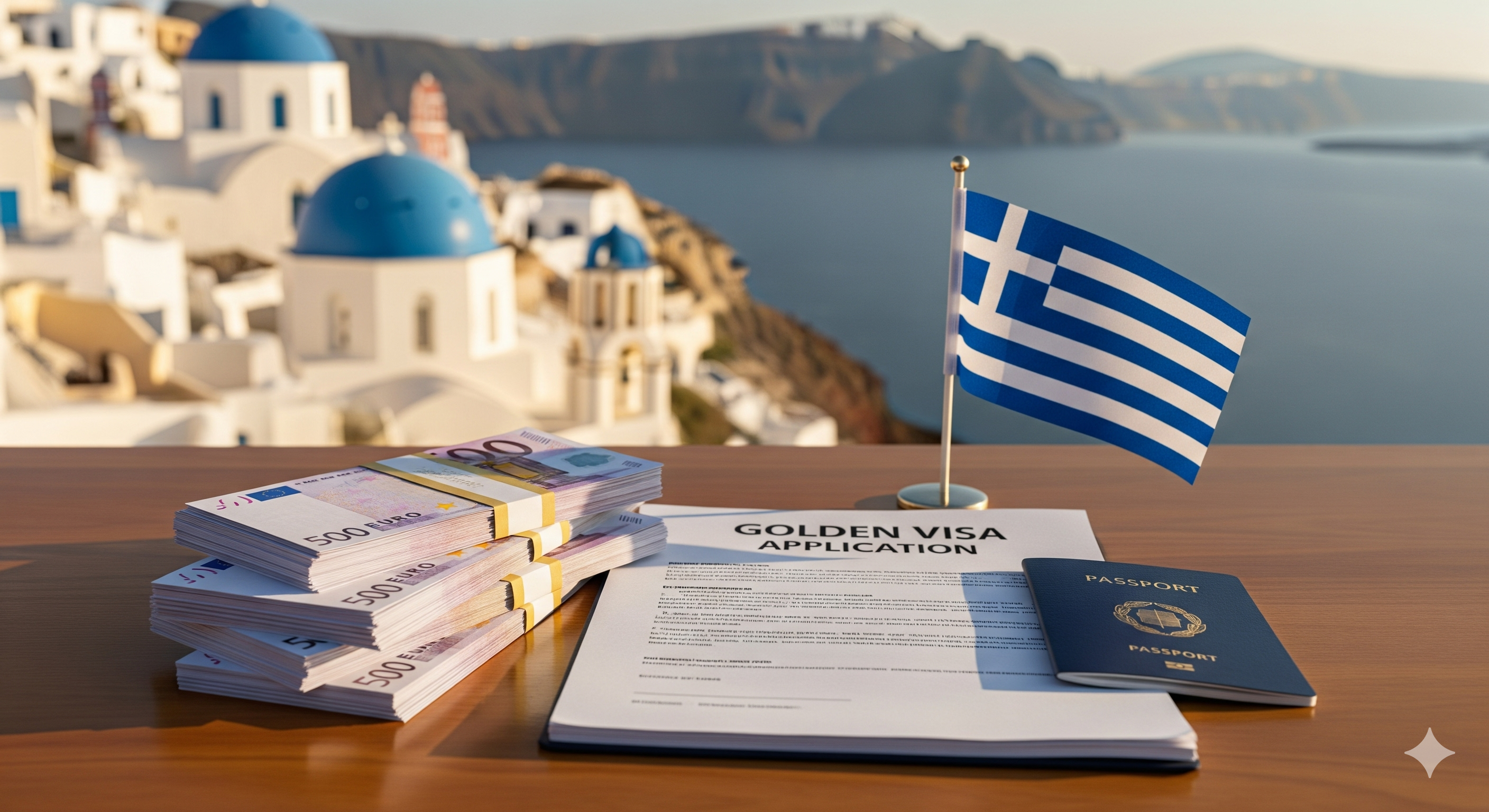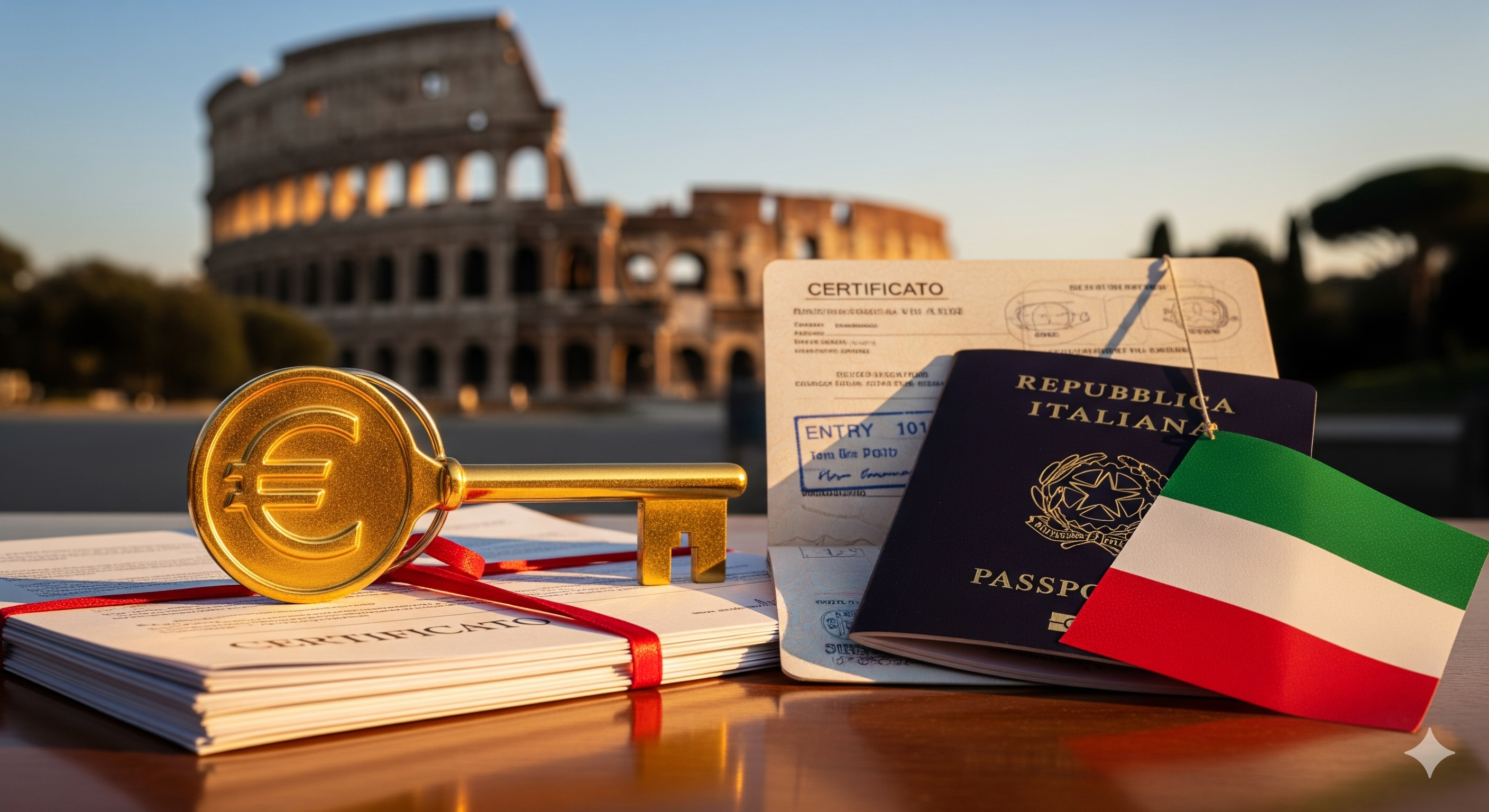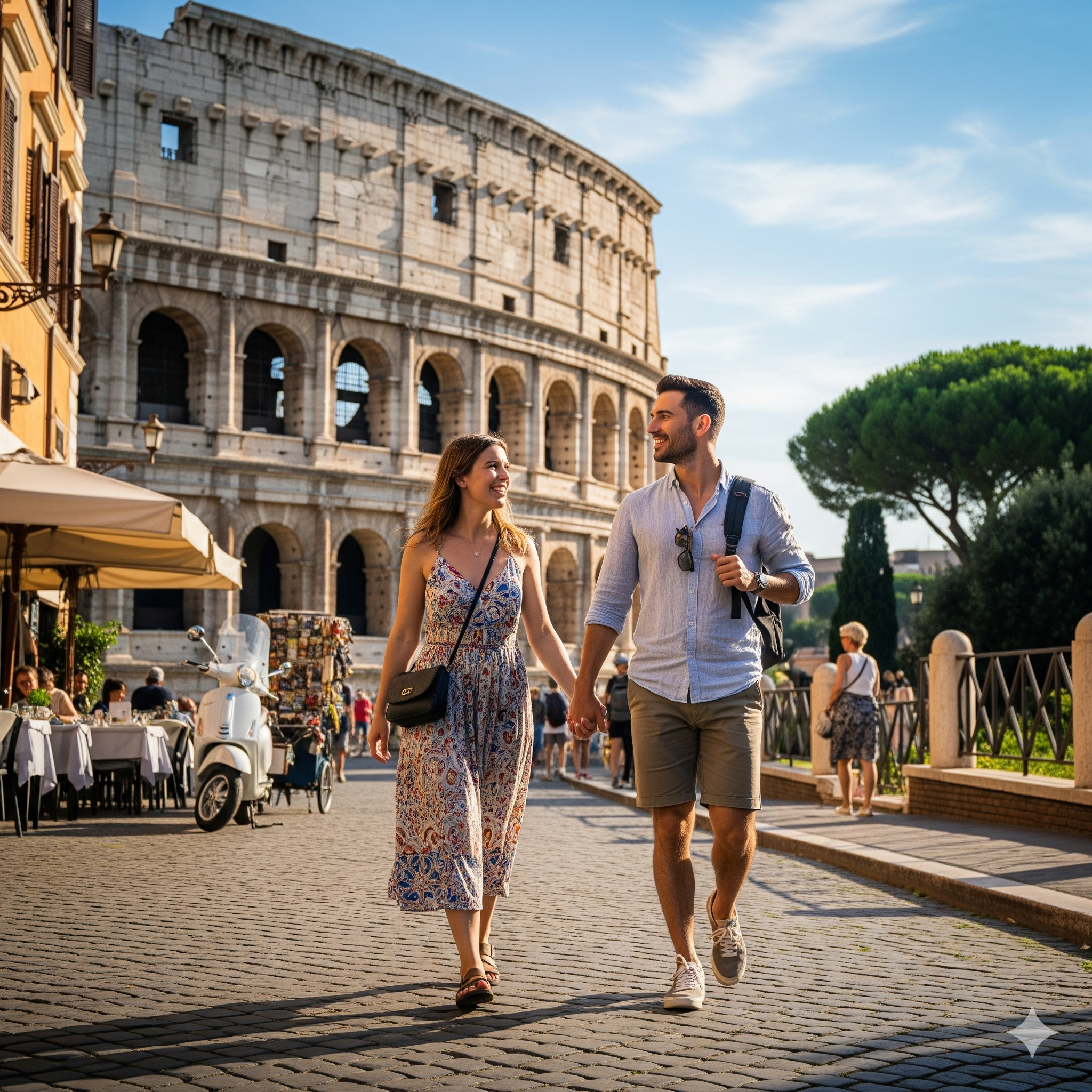
The American's Guide to Life in Italy
From dual citizenship and tax perks to cultural lifestyle and regional diversity, discover what makes Italy a compelling choice for American expats.
Introduction
Home to a rich history and culture, architecture, fashion, sport, and more, Italy’s strategic location in Southern Europe, nestled between the Mediterranean and Adriatic Seas, makes it an ideal place to live. Italy is a founding member of the EU and the third-largest economy in the eurozone. Italian citizens enjoy high standards of living, education, healthcare, and a unique quality of life.
Dual citizenship: Fully permitted with no restrictions
Recent governmental decrees in Italy have changed how the country adjudicates citizenship by descent cases. What you need to know:
- Basic language proficiency in Italian is now expected of applicants.
- No residency requirement: we will handle your case, ensuring that the entire process will be completed without you needing to spend time in Italy.
- Dual citizenship: fully permitted - you will not need to renounce your U.S. citizenship to become an Italian citizen.
Full Name: Italian Republic - Repubblica Italiana
Official Language: Italian
Population: ~59,000,000
Capital: Rome
Time Zone: Central European Time (CET) UTC +1
GDP:
- Total: ~$3.957 trillion
- Per capita: ~$40,300
Country calling code: +39
Why Italy Captivates: Culture, History, Taxation & What Surprises Americans Most
Few countries ignite the imagination like Italy. With its Renaissance cities, cinematic coastlines, and world-renowned cuisine, Italy remains one of the most sought-after destinations for global travelers - and increasingly, for expats seeking a richer lifestyle. Whether you’re considering a sabbatical, second home, or full relocation, Italy offers a blend of history, beauty, and opportunity that is hard to match.
What Surprises Americans About Living in Italy
Despite romantic expectations, Italy can challenge American expats in subtle (and not-so-subtle) ways:
- Bureaucracy: Americans moving to or living in Italy should be prepared for bureaucracy that is often slow, fragmented, and paper-heavy—very different from the more streamlined systems they may be used to in the U.S. While processes do work, they often require patience, persistence, and in-person follow-ups.
As an American, you can use your U.S. driver’s license in combination with an international driving permit for up to 12 months. If you intend to relocate to Italy long-term, you must take and pass Italy’s driving exam. Some expats find it easier to get an EU driving license in another country first, like France or Ireland, and then transfer it to Italy.
If you are seeking to become a resident in Italy, you must get a Codice Fiscale - an Italian tax ID number. It’s needed for nearly everything bureaucratic, like renting an apartment, opening a bank account, or applying for healthcare. It’s an essential first step not to be missed!
-
Pace of Life: La dolce vita is real — and sometimes slow. Many stores close midday, and services may not operate 24/7. La dolce vita captures the essence of a slower, more intentional lifestyle, which often contrasts sharply with the faster-paced, productivity-driven culture of the United States. Long lunches, afternoon breaks, and evening strolls (la passeggiata) are common. Work-life balance is big in Italy, as is the norm in Southern Europe. Long vacations (especially in August), shorter workweeks in some sectors, and strong labor protections support this. Long vacations (especially in August), shorter workweeks in some sectors, and strong labor protections support the Italian way of life. For Americans used to a 24/7, fast-service culture, this shift can feel frustrating at first, but ultimately rewarding for those seeking a deeper, slower rhythm of life.
-
Healthcare: Italy’s universal public healthcare is low-cost and high quality, but Americans used to private systems may find appointment scheduling and wait times different. Many expats opt for private insurance to bypass delays, though pre-existing conditions are often excluded. Legal residents (including retirees and expats) can often access the public system, sometimes with a small annual fee. See the table below for a comparison of the American and Italian healthcare systems.
|
Feature |
Italy |
United States |
|
System Type |
Universal, public system (Servizio Sanitario Nazionale, SSN) |
Mixed private-public system |
|
Access |
Free or low-cost for all legal residents |
Access tied to insurance (employer, private, or public like Medicare/Medicaid) |
|
Funding |
General taxation (national and regional) |
Mix of private insurance, Medicare/Medicaid, out-of-pocket |
|
Coverage |
Covers most services (GP, hospitalization, surgery, emergency, maternity, prescriptions) |
Varies by insurance plan; often excludes dental, vision, etc. |
|
Private Options |
Available and affordable for faster service or private hospitals |
Extensive, dominant in many sectors |
|
Out of Pocket Expenses |
Low (mostly co-pays or ticket fees) |
High; includes premiums, deductibles and co-pays |
|
Insurance Premiums |
Not required for the public system |
Often $500-$1,500+ per month for private plans |
|
Life Expectancy |
~83 years |
~77 years |
-
Cash Culture: Despite EU and national initiatives to universalize card and digital payments, some areas still prefer or expect cash payments. Since 2022, Italy mandates that all merchants must accept debit/credit cards or risk fines. Contactless payments and mobile wallets (Apple Pay, Google Pay) are becoming more popular, particularly in cities. Notably, Italy has a legal cap on cash transactions (as of 2024, €4,999.99), to combat tax evasion and encourage traceability.
-
Regionalism: Northern and Southern Italy can feel like two different countries — culturally, economically, and administratively. Italy’s regionalism is more than geography - it's a living, breathing part of everyday life. From food and language to work culture and infrastructure, Northern and Southern Italy often feel like different worlds - both uniquely Italian, yet deeply distinct. The table below illustrates some differences between the “two Italys.”
|
Aspect |
Northern Italy |
Southern Italy (Mezzogiorno) |
|
Economy |
Industrialized, wealthier, export-driven |
Less developed, agrarian roots, higher unemployment |
|
Cities |
Milan, Turin, Venice, Bologna |
Naples, Bari, Palermo |
|
Culture |
More reserved, punctual, efficiency-focused |
Warm, expressive, community- and tradition-focused |
|
Cuisine |
Butter, rice, polenta, cured meats (e.g. risotto, ossobuco) |
Olive oil, pasta, tomatoes, seafood (e.g. pasta alla norma, arancini) |
|
Language and Dialect |
Influenced by Germanic/French (e.g. in Trentino, Piedmont) |
Rich Greek-Arab-Spanish influence (e.g. Sicilian, Neapolitan dialects) |
|
Infrastructure |
Modern, well-developed transport (fast trains, highways) |
Less consistent; slower trains, older roads in rural areas, more chaotic drivers |
|
Outlook |
Often seen as more business-oriented and pragmatic |
More laid-back, family-centered, slower-paced |
-
Education: In Italy, education is compulsory from age 6 to about 16. After 16, students choose among academic (liceo), technical or vocational professional tracks. University-level education in Italy comprises public and private universities, as well as specialized institutions for fine arts and music. Italian citizens have the freedom to study at any university in the European Union.
But beyond its iconic landmarks and legendary past, Italy is a complex modern nation with distinct tax policies, lifestyle rhythms, and bureaucratic realities. Let’s explore the multifaceted nature of Italy - from ancient Rome to the present day - through the lens of history, policy, and modern migration.
What Italy Is Known For
Italy is synonymous with cultural richness and artistic legacy. Highlights include:
-
Cuisine: Pizza, pasta, gelato — and regional variations that make every meal an event.
-
Fashion: Home to luxury brands like Gucci, Prada, and Valentino.
-
Design: Globally influential in furniture, architecture, and automotive aesthetics.
-
Landmarks: The Colosseum, Leaning Tower of Pisa, Venice’s canals, Amalfi Coast.
-
Wine & Coffee: Italy is the world’s largest wine producer and the spiritual home of espresso culture.
- Sport: Italy is consistently well-represented at the Olympic games across a variety of sports. Also, its top soccer teams, including AC Milan, Inter Milan, and Juventus, are some of the most popular soccer brands in the world.
Fun Facts About Italy
-
Italy has 55 UNESCO World Heritage Sites — the most of any country.
-
The Vatican, located in Rome, is the smallest country in the world by area and population.
-
Italy didn’t become a unified nation until 1861, and many regions still retain distinct dialects and cultural identities.
- Approximately six million American tourists visit Italy each year, according to the Italian government's statistics bureau.
A Brief History of Italy & Rome
Italy’s influence on Western civilization is profound:
-
Ancient Rome was the capital of an empire that stretched across three continents, contributing foundational systems of governance, law, and architecture.
-
The Roman Republic (509–27 BC) inspired modern concepts of checks and balances.
-
The Renaissance, born in cities like Florence and Venice, revolutionized art, science, and humanism.
-
Italy has a relatively young political unification (1861) and became a republic only in 1946, after the fall of Mussolini’s fascist regime.
Today, Italy balances reverence for its past with challenges of modern governance and economic reform.
Italy's Tax System: What You Should Know
Italy's tax system is progressive but complex. For residents, taxes apply to worldwide income, while non-residents are taxed only on Italian-source income.
Key Rates (2024):
-
Personal Income Tax (IRPEF): Progressive from 23% to 43%
-
Corporate Tax (IRES): Flat 24%
-
Regional & Municipal Surtaxes: Vary by location; can add 1–3%
-
VAT: Standard rate is 22%, with reduced rates for certain goods/services
Tax Perks for New Residents
To attract foreign wealth and retirees, Italy has introduced favorable tax regimes:
-
€200,000 flat tax on all foreign income for high-net-worth individuals who become Italian residents.
-
7% tax rate for foreign pensioners.
-
Highly Qualified Workers Regime offers a 50–70% income tax exemption for skilled professionals relocating to Italy.
These policies are part of Italy's broader push to attract foreign capital, talent, and retirees to bolster local economies.
Italy by the Numbers: Global Index Rankings
Understanding Italy’s position in the world can help gauge quality of life, economic climate, and long-term prospects:
|
Index |
Score / Rank |
Key Notes |
|
UN Human Development Index (2023) |
0.895 (Rank 30/191) |
Very high human development |
|
Heritage Foundation Index of Economic Freedom (2024) |
61.1 (Rank 70/184) |
Moderately free, with high public debt and regulatory rigidity |
|
World Bank Ease of Doing Business (prior to 2021) |
58th globally |
Lagging in bureaucracy and taxation ease |
|
Numbeo Quality of Life Index (2024) |
Rank 27 |
High safety, healthcare, and climate ratings |
|
Global Peace Index (2023) |
Rank 32 |
Stable and peaceful compared to global average |
Final Thoughts: Should You Consider Italy?
For those drawn to a more intentional lifestyle, deep history, and cultural refinement, Italy offers immense rewards. Whether you’re leveraging citizenship by descent or investment-linked paths, the country stands as both a haven and a challenge — inviting those with patience, perspective, and a sense of adventure.
Ready to turn your Italian dream into a legal, financial, and lifestyle reality? Our team can help you explore your eligibility, navigate citizenship and tax regimes, and position Italy as part of a global diversification strategy.
Book a Free Consultation with one of our experts to begin your Italian journey.




